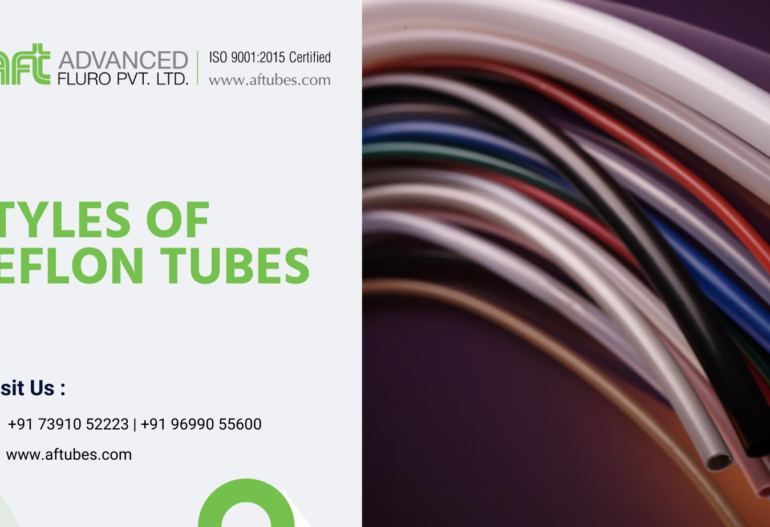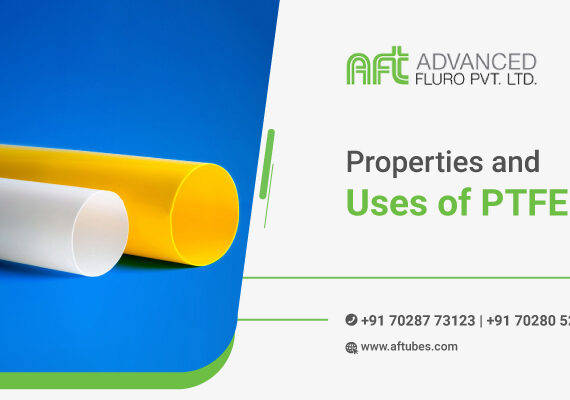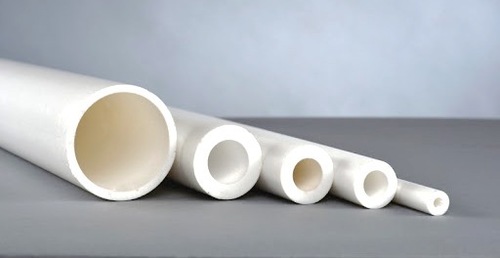Different Types of Tubings
PTFE Tubing is a transparent, chemically inert, and non-toxic material that features unmatched chemical resistance and a surface that facilitates the flow. It is most widely used as laboratory tubing and for applications where chemical resistance and purity are essential. PTFE has a very low coefficient of friction and it is one of the most “slippery” substances known.
It is a synthetic polymer consisting of two simple elements; carbon and fluorine. It is derived from tetrafluoroethylene (TFE) and has some unique properties that makes it a useful material in a wide range of applications. For example:
- Very high melting point: With a melting point of around 327°C, there are very few situations where PTFE would be damaged by heat.
- Hydrophobic: It’s resistance to water means it never gets wet, making it useful in cooking, wound dressings and more.
- Chemically inert: The majority of solvents and chemicals will not damage PTFE.
- Low coefficient of friction: The coefficient of friction of PTFE is one of the lowest of any solid in existence, meaning nothing will stick to it.
- High flexural strength: It’s ability to bend and flex, even at low temperatures, means it can be easily applied to a variety of surfaces without losing its integrity.
All these unique properties mean PTFE is a very useful material and is widely used in both domestic and commercial applications. You probably have PTFE in your own home, coating your non-stick cookware or providing stain resistance in your carpets and fabrics. You may also find it in nail polish, wiper blades and hair styling tools.
PTFE is a useful product for coating the inside of pipes carrying corrosive chemicals or very hot materials. It has been successfully used in the manufacture of artificial body parts. This is due to its inert nature which makes it unlikely to be rejected by the body. It can be used in lubricants and was even used in the Atomic Bomb to seal the gaskets holding the uranium.
PTFE is also used to make containers and pipes because it is anti-corrosive, and non-reactive. This is useful for laboratories handling highly corrosive chemicals that need to be placed in glass containers. Additionally, it’s carbon-fluorine bonds give PTFE increase tensile strength.
Types of Tubing:-
PTFE Tubing
It is the original iteration of fluoropolymer tubing and was invented back in the 1940s. This version of tubing continues to cover a vast range of unique properties like high-temperature resistance and a nearly universal chemical resistance with non-stick characteristics. It is perfect for medical devices, automotive applications, fluid flow tubing, electrical wire insulators and more.
FEP Tubing
FEP tubing was developed in the 1950s. It has features like being more optically clear, lower gas and vapor permeability and more chemically inert. It can be used in applications where PTFE falls short because FEP possesses a working pressure that is 30% higher with a temperature that is 50 degrees Fahrenheit lower. Also, FEP tubing is more flexible than PTFE and has superior dielectric strength.
PFA Tubing
PFA tubing came to be in the late 1960s. It originated due to a need for a resin with chemical and the use of temperatures closer to PTFE. PFA has many benefits over other kinds of fluoropolymer tubing because it has a higher working pressure capability than both FEP and PTFE. It is ideal for laboratories, pharmaceuticals and sampling applications due to its ultra-high purity grades.








